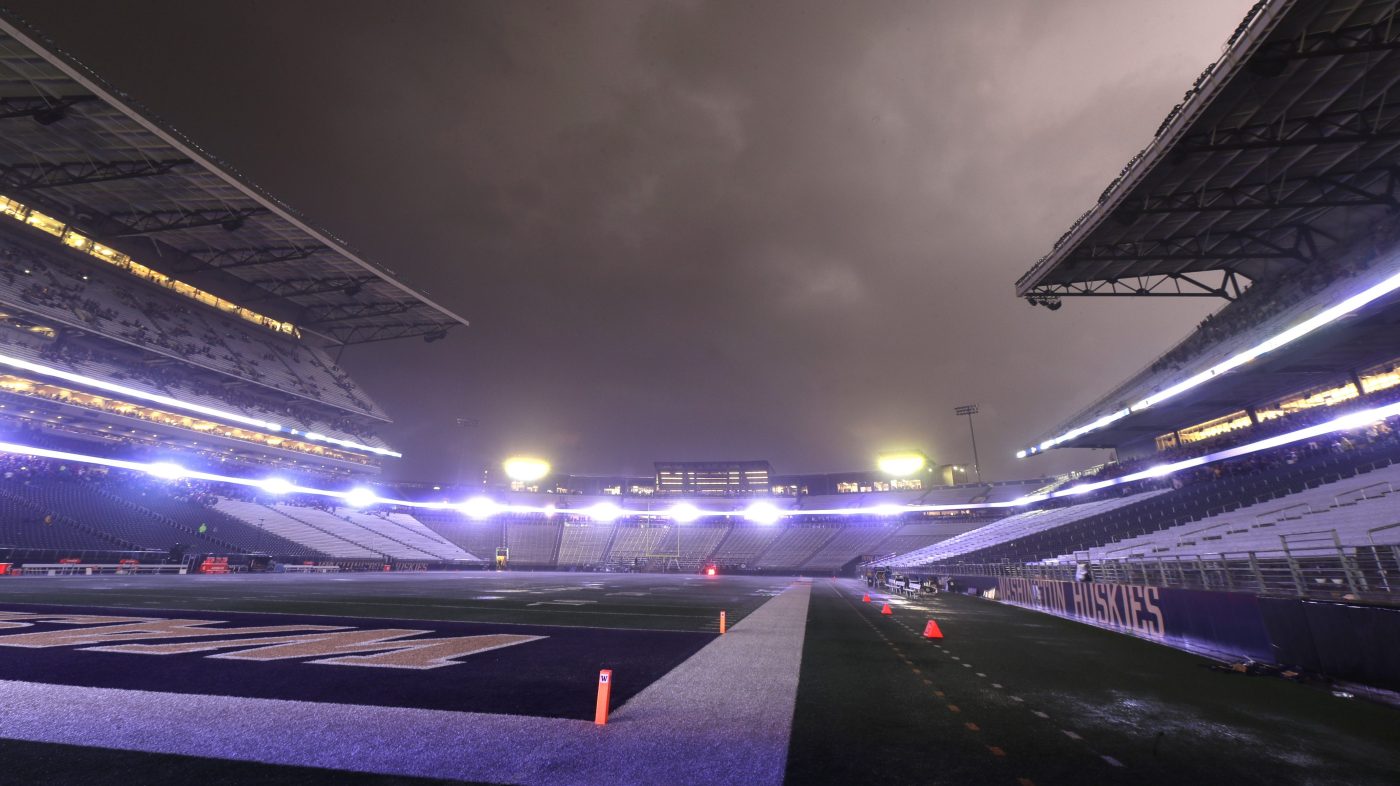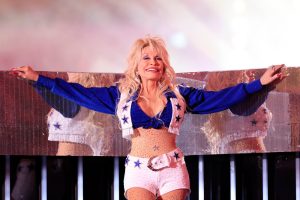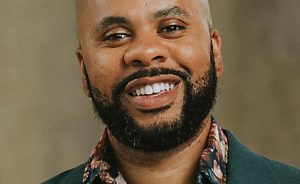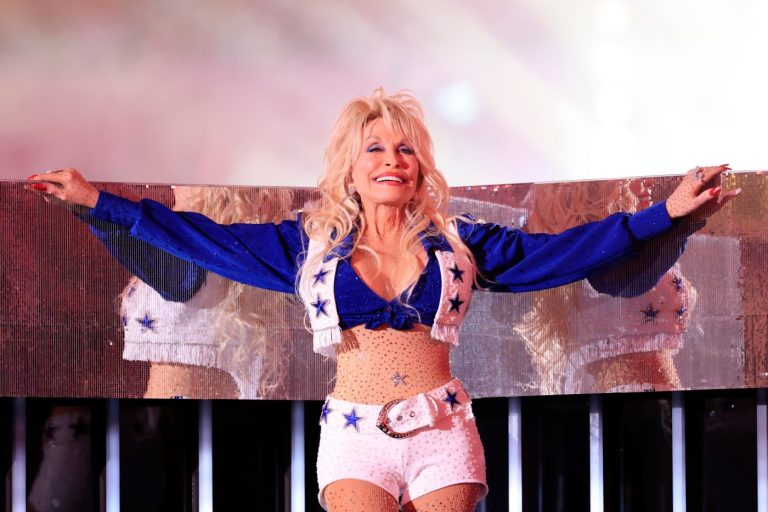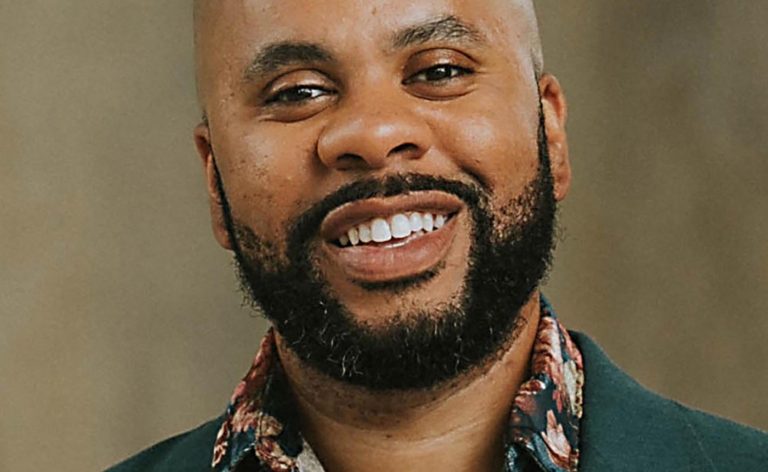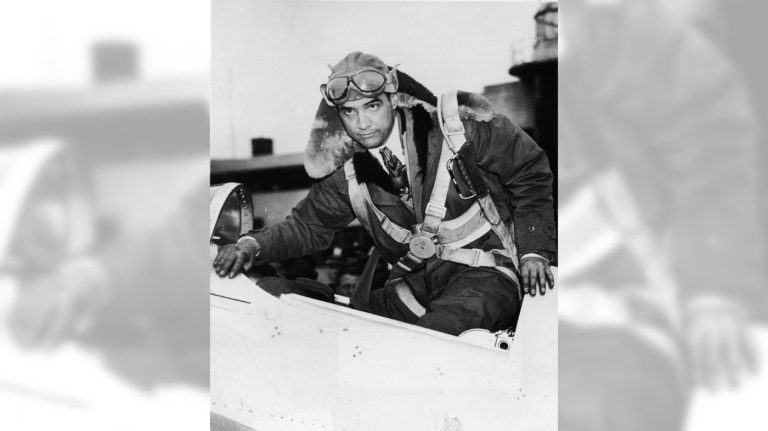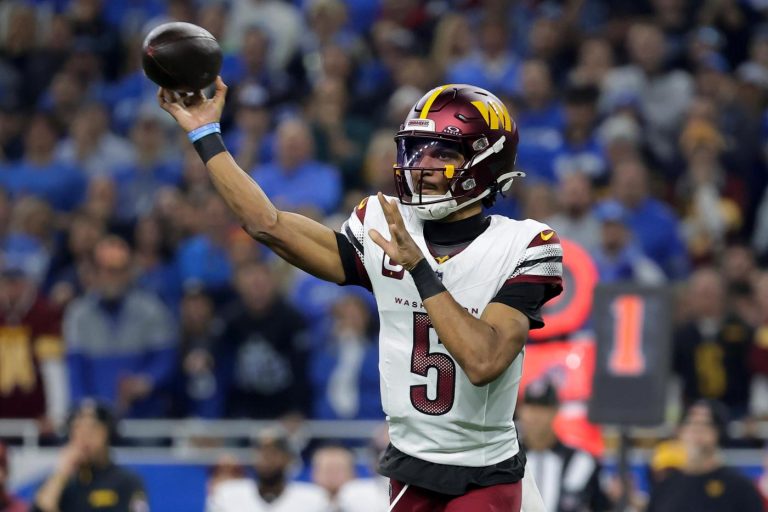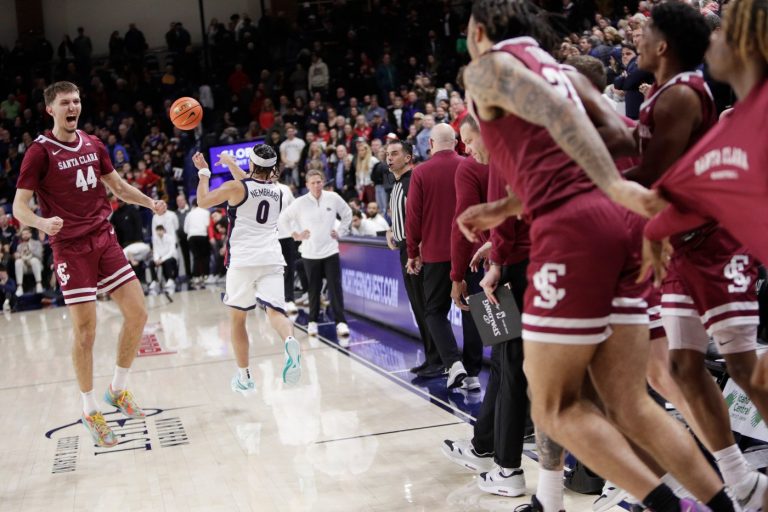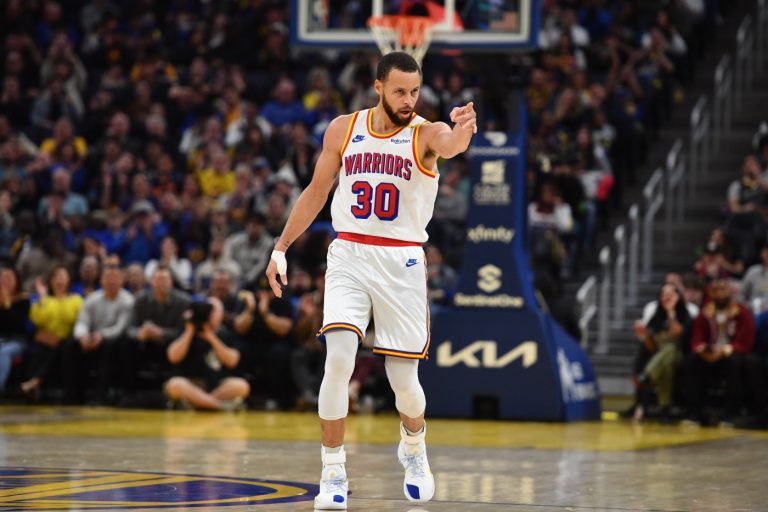The Hotline mailbag publishes weekly. Send questions to pac12hotline@bayareanewsgroup.com and include ‘mailbag’ in the subject line. Or hit me on Twitter/X: @WilnerHotline.
Please note: Some questions have been edited for clarity and brevity.
How soon until we see an Amazon or Starbucks logo on Washington’s field? — @Moneyline_RAY
For those who missed the news, the NCAA on Thursday approved on-field corporate advertisements for the upcoming season. The change comes in the wake of the House antitrust case settlement, which will force schools to share revenue with athletes (up to roughly $20 million annually) starting as early as 2025.
On-field corporate logos were an untapped source of revenue for athletic departments that are now even more desperate for cash.
How much? The logos could be worth “at least $3.8 million to $4.2 million a year for top-level schools in the Power Four conferences,” according to a USA Today report based on revenue estimates from Navigate, a sports sponsorship and valuation firm.
We expect most schools to take advantage of the opportunity, if not in time for the 2024 season then by the fall of 2025.
Washington is fortunate in that three globally recognized corporate brands are based in Seattle: Starbucks, Microsoft and Amazon.
The rule change permits on-field logos for the entire season or on a game-to-game basis, meaning schools could bid out the rights based on the opponent.
Washington could charge more for a game against Michigan than Purdue, for instance.
Other schools with obvious corporate partners will do the same.
How many seconds will it take Oregon to slap Nike’s swoosh across midfield at Autzen Stadium?
Could we see the Intermountain Healthcare logo in Utah’s Rice-Eccles Stadium?
Gesa Credit Union already owns the field naming rights at Washington State’s Martin Stadium. Will the company increase its investment by a few million dollars so the logo covers midfield?
The schools are undoubtedly working to secure partnerships as soon as possible. But in our view, this is merely the first step — or the next step — in the corporate takeover of college athletics.
First came naming rights to the fields.
Now comes logos on the field.
How soon until the stadiums are renamed? How much cash would Washington require to change Husky Stadium to Amazon Stadium?
The NCAA would have to approve that step, just as it approved the on-field logos. But the NCAA is ultimately run by the schools, and the schools always need more revenue.
Which brings us to the most significant corporate leap of all: How soon until the schools sell the naming rights to their athletic departments?
When will the University of Washington Huskies become the Starbucks Huskies?
It’s coming, folks. It might take a few years — maybe five years, maybe 10 — but it’s coming.
Everything else about major college football is big business. Why not just sell the name of your football program? Why not sell the entire department to a corporate sponsor?
The Hotline suggested something similar for the Pac-12 back in the fall of 2022, in the early months of the media rights process.
We created the Amazon Partnership Plan and argued the conference should partner with Amazon on all business opportunities across the 10 campuses, from food services to cloud storage to driverless cars.
It was a radical idea then, and it’s a radical idea now — although much less radical given the financial challenges posed by the House lawsuit settlement.
The clock ticks fast in college sports. Developments that should take a decade to unfold require just a few years to materialize.
The Starbucks Huskies and Nike Ducks and Intermountain Healthcare Utes and Gesa Cougars are coming, sooner than you think.
ESPN appears to have few options for the 7:30 p.m. kickoff window (previously occupied by #Pac12AfterDark) with only Cal, Stanford and (before November) the two Arizona schools. Will most or all Cal and Stanford home games be shown at night, even more frequently than in the Pac-12 era? — @gonealookin
I’m not sure the options are as narrow as you suggest.
Yes, ESPN must rely on the six schools headed to the Big 12 and ACC for late-night inventory because it’s not part of the Big Ten media rights package and cannot broadcast USC, UCLA, Oregon or Washington home games or conference games.
But don’t forget about the other Big 12 schools in the western third of the country: Utah, Brigham Young and Colorado. Despite their Mountain Time Zone location, the trio could play some home games at 7:30 p.m. Pacific.
The situation gets tricky once the time changes in early November, partly because the state of Arizona shifts from Pacific to Mountain Time — technically, Arizona is on Mountain Standard Time all year — and partly because 8 p.m. (local) kickoffs in Boulder, Salt Lake City and Provo can be frigid for fans.
So, yes: For the handful of Saturday nights after the time changes but before conference championships, Stanford and Cal could populate the late window frequently. (Big Game might start at 7:30 for the rest of eternity.)
But our hunch is that 30-minute slide forward, to start games at 7 p.m. Pacific in November, will provide ESPN with some options.
If the ‘Pac-2’ plan to rebuild the conference for 2026 using the top of the Mountain West, don’t they really need to invite schools before July so they can avoid the exit fees doubling? — @therealtmac13
Actually, Washington State and Oregon State have 13 months to make a decision because the tiered Mountain West departure fees are based on a 12-month deadline:
— If schools provide more than 12 months’ notice, the penalty is one year of revenue (about $18 million).
— If notice is given within 12 months of departure, the penalty doubles.
Any schools moving from the MW to the rebuilt Pac-12 would depart in the summer of 2026, meaning their deadline is next July, not this July.
Realignment requires months to plan and execute, so we fully expect clarity on the Pac-12 reclamation project — however it plays out — within nine or 10 months.
There have been a lot of rumors about what’s waiting for Cal and Stanford once the ACC collapses. Could you break down the likelihood of each scenario, such as joining the Big Ten, rejoining the Pac-12, etc? — @CelestialMosh
There is a case to be made that Cal and Stanford abandoned the Titanic only to take refuge aboard the Lusitania — that Florida State and Clemson are leaving for the SEC or Big Ten at some point in the next three or five years and the ACC is doomed as a result.
It’s difficult to envision anything but a negotiated settlement that provides the Seminoles and Tigers with an escape hatch. And once they leave, the theory goes, North Carolina follows and the whole thing blows apart.
Would the remaining ACC schools seek to merge with the Big 12? Could they create their own league? Could they somehow join forces with the Big East in basketball?
Or might the dissolution of the ACC spark a breakup of the power conference structure and lead to the formation of a super league?
The timing is also uncertain, and it matters. Options for Cal and Stanford in a post-ACC world might be very different in two years as opposed to five years.
Honestly, there are too many scenarios to cover here, but we will offer this morsel:
If the ACC crumbles, Cal and Stanford undoubtedly will attempt to join the Big Ten and create a six-team West Coast division that makes loads of sense for fans and athletes alike.
Reforming the Pac-12 or joining the Big 12 would be secondary considerations.
If they aren’t already lobbying Fox, which would have to fund their move into the Big Ten, they should start immediately.
With schools forced to pay players in the future, do you see pushback and political initiatives from taxpayers/voters in some West Coast states to block public funds going toward athletics? — @Wazzucoug1996
Quite possibly, for the political winds on the West Coast are difficult to predict.
But don’t forget a critical piece to the House settlement approved last month by the NCAA and the Power Five conferences:
The revenue-sharing component is based on cash generated by the athletes’ name, image and likeness, and it comes from three sources directly connected to NIL: ticket sales, sponsorships and media rights deals.
It’s not tied in any manner to university or public funds.
Attorneys for the plaintiffs and the defendants believe that aspect will shield the settlement from Title IX legal challenges — NIL revenue is based on market value, not federal dollars — and it just might ward off taxpayer objections, as well.
So much of the settlement is uncertain, including the public response.
What’s the Over/Under for the number of years until student athletes are no longer required to be students and or have eligibility limits? — @RockDawg3
Consider this a transition phase for the NCAA that began when college sports emerged from the pandemic and will probably last into the early 2030s.
The end result could feature a college football super league with 30 or 40 of the biggest brands.
It could feature three 20-to-24 team conferences (the Big Ten, the SEC and a merged ACC/Big 12).
It could feature football as an independent entity, separate from the NCAA.
There are myriad possible scenarios and only one option that we consider extremely unlikely: the status quo.
So let’s set the O/U figure at eight years for student-athletes becoming purely athletes, with academic responsibilities available on an opt-in basis.
Do you plan to cover women’s basketball more this upcoming season since it’s becoming more and more popular? — @crashlit
The Hotline has provided weekly in-season coverage of Pac-12 women’s basketball for years, with veteran journalist Jeff Metcalfe taking the leading role.
Related Articles
Big 12 commissioner Brett Yormark asks Arizona Board of Regents for continued investment in athletics
Pac-12 recruiting: Arizona lands two QBs as ASU, UCLA stay hot
Oregon football team’s academic performance drops again: Cause for concern in Eugene?
Pac-2 survival: The CW, Fox create huge max audience for WSU, OSU
College football 2024: Ohio State tops our revised Top 25 rankings
Our plans for covering the outbound teams in their new homes, and women’s college basketball in general, have not been finalized.
The good news: We have six months to figure it out.
For now, the Hotline is focused on finalizing our college football coverage with the two mammoth changes coming in 2024: The new conference structures, and the expanded playoff.
When will the Hotline focus primarily on the West Coast teams that are entering the Big Ten and move away from the ‘Pac-2’ schools? — @Ringmaster2015
With all due respect, we don’t see it as one or the other. It’s both, and more.
The Hotline will continue to cover Washington State and Oregon State as they navigate the new world order.
And we will cover the West Coast teams in the Big Ten.
And we will cover the Four Corners schools in the Big 12 and the Bay Area schools in the ACC.
In fact, our shift is already underway.
On Thursday, we wrote about Big 12 commissioner Brett Yormark’s address to the Arizona Board of Regents and, previously, we covered Yormark’s update on the Big 12’s spring business meetings.
A few weeks ago, the Hotline analyzed the Big Ten’s win totals for 2024 and its tiebreaker conundrum with 18 teams and only nine conference games.
That coverage comes in addition to articles on specific schools, like UCLA’s required ‘Calimony’ payments and Oregon’s academic situation.
And we’ll continue to provide news and analysis of school-specific issues and developments that impact the conferences at large.
Thanks for asking.
*** Send suggestions, comments and tips (confidentiality guaranteed) to pac12hotline@bayareanewsgroup.com or call 408-920-5716
*** Follow me on Twitter/X: @WilnerHotline
*** Pac-12 Hotline is not endorsed or sponsored by the Pac-12 Conference, and the views expressed herein do not necessarily reflect the views of the Conference.
